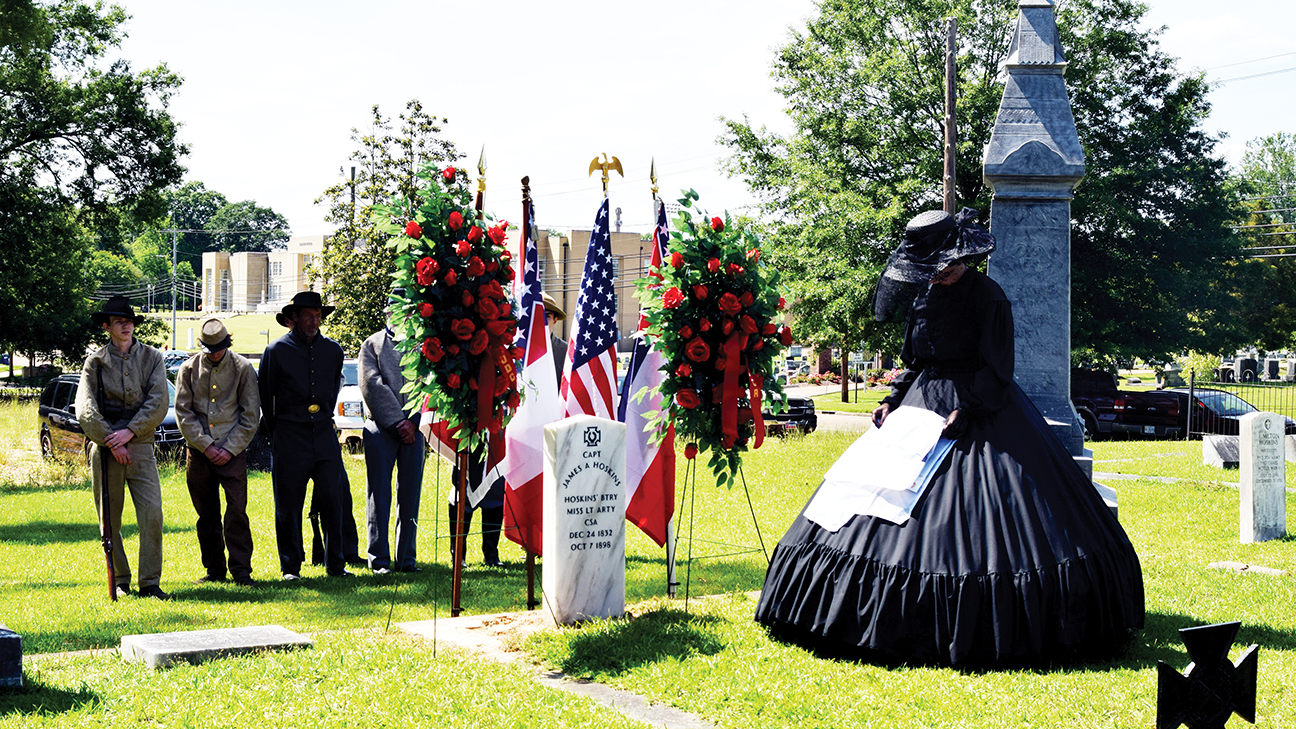MSA affects local, state creative economy
Published 10:00 pm Saturday, September 27, 2014
Creativity is hard to quantify. The contributions of the arts in Mississippi is well known, but their economic impact is sometimes overlooked.
“For me, creative economy is all about taking human creativity and turning it into a resource,” said Marketing Director of the Brookhaven-Lincoln County Chamber of Commerce Kay Burton. “They are having a phenomenal economic impact on the state, country and world. I get really excited about it because we don’t typically measure economic resources in that way.”
For the state, The year 2014 has been declared the year of the creative economy for Mississippi. As stated by Governor Phil Bryant, the 12-month celebration is an opportunity to showcase the people, communities and enterprises that move the state’s economy forward. This state is the birthplace of America’s music, a home for a host of infamous artists and writers and a place where inspiration creativity, and artistic passions can grow.
Art has blossomed across the state, and Lincoln County is no exception. Notable artists such as Kim Sessums, who creates nationally renowned monuments, Terri Warnock, who creates unique pottery and jewelry, James Minter, who bends metal into beautiful sculptures, and Sheriff Steve Rushing, who turns wooden scraps into pens, are just to name a few who have made the area a well-known hot spot for creativity.
Throughout its history Brookhaven has been so appealing to artistic spirit that in 1999, the state legislature voted to put the Mississippi School of the Arts into the historic Whitworth college. The school has become a kind-of artist colony for the creative youth in Mississippi.
“This is a unique place that inspires people to blossom,” said Burton. “I love having the art school here. It blends the past, present and future.”
Whitworth College was founded in 1858 and served as an all female four-year institution. The school expanded throughout the late 1800s and early 1900s, and in 1913 it became a co-ed facility. The college was owned by the Mississippi Methodist College, who leased the property to the City of Brookhaven in 1938 for 50 years. The college was reopened in 1961 offering majors in eight fields. In 1974 the college had become too expensive for the Methodist church, so they sold it to Whitworth College, Inc. The name was then changed to Whitworth Bible College but eventually closed in 1984. The once thriving college had fallen into disrepair.
Brookhaven residents banned together to raise money to renovate parts of the campus, but it was not until a visit from the Mississippi First Lady Patricia Fordice that the idea for a school of the arts at Whitworth College was conceived.
Burton said Fordice looked at the college and said “This is an incredible place, and the arts school needs to be here.”
“That’s where the seeds were planted,” said Burton.
MSA has been operating for over a decade and has taught students from 48 different counties in the state. The school has become a centerpiece in downtown Brookhaven, and even though it’s still developing, there has been an impact on the community that is the definition of creative economy.
“Saving the campus really saved downtown Brookhaven,” said MSA Coordinator of School Advancement Jennifer Jackson.
MSA Executive Director Suzanne Hirsch said the school has a direct economic impact through students and parents visiting and spending money, the employment of educators from 12 different counties and from the services contracted out to make the school operational.
“The school effects the overall quality of life,” said Hirsch. “The fact that there are 50 public events a year from classic to contemporary arts increase art accessibility for the community. People come from all over the place to attend. We help the community grow.”
Students at MSA are involved locally through their performances at the Haven, over 100 community service hours a month collectively, public shows and some are even coming back to live in the community after graduation.
The school has had students from 96 percent of the state’s counties. Jackson said they are continually making efforts to reach the other four, and each year they have added a new county to their student body makeup.
MSA offers programs in dance, literary arts, theater, visual arts and vocal music. Last year their students averaged 23.6 on the ACT and accumulated $5,750,000 in scholarships. Approximately 50 percent of graduates are Mississippi Scholars, 30 percent are at or below the federal poverty level.
“Students come here to find like-minded students and to find things that inspire them. They rise with each other and get inspired by work. They find belonging and a place to be who they are,” said Hirsch.
She explained the effect on Mississippi represents creative economy because of the skills students are learning and taking with them in life. Even if they do not stay in an art profession, they are still creating and appreciating art.
“I think we have yet to see the full circle of what that art school will offer,” said Burton. “They haven’t been here many years. It will really be neat to see down the road what comes back to Brookhaven.”
The school is still looking to expand and renovate buildings on the campus. Hirsch said the first priority is to finish Elizabeth Hall, eventually making it an artist residence. The artist would live on campus, produce art and teach. The next project is to renovate the third floor of Enochs Hall. Down the road, the school wants to build a second dorm and renovate Cooper Hall. That project would allow them to add studies in digital media and instrumental arts.
Hirsch said they can get grants for renovations but not for creating the dorm. She added the dorm construction and renovation of Cooper Hall would have to be done simultaneously because to add programs they will need to be able to house more students, and if they house more students they will need to be able to offer more programs.
With Elizabeth, Enochs and Cooper completed, the college would be back in full swing. The centerpiece of Brookhaven would be completed.
“The school adds dimension to our community. It keeps us from staying in the box,” said Burton.





